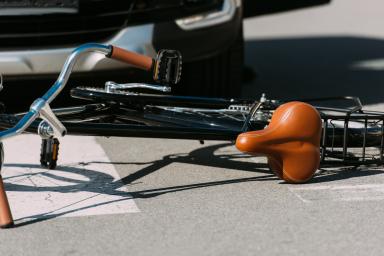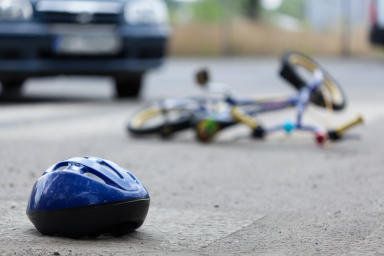Indiana Bicycle Laws

Indiana continues to provide safer roads for bicyclists of all ages. Featuring four U.S. Bike Routes, Indiana offers a total of 730 miles of bike lanes, trails, and low-traffic roads suitable for long-distance, experienced, and touring cyclists.
The state’s U.S. Bike Routes are nestled between scenic roads that connect cyclists with urban cycle tracks. These routes include USBR 35 (381 miles north-south route from Lake Michigan to the Ohio River), USBR 36 (58.7 miles east-west route along Lake Michigan), USBR 50 (160 miles east-west route across central Indiana), and USBR 235 (120 miles between Seymour and Indianapolis).
Despite having many bike trails throughout the state, bicycle crashes still happen. Cyclists involved in bike accidents may suffer from mild and serious injuries, including whiplash, concussions, road rash, traumatic brain injuries, and even death.
To improve road safety and protect cyclists against accidents, Indiana has implemented laws restricting unsafe riding practices. These measures appear to have paid off, as bike accidents in Indiana decreased by 26% in 2020. From 927 bicycle-related accidents reported in 2016, the number has dropped to 684 over four years.
This article focuses on Indiana laws that apply to cyclists. It equips them with the knowledge necessary to prevent crashes and the legal repercussions associated with violating the rules for operating bicycles. The information that follows also provides guidelines on recovering damages should an accident happen to a cyclist.
Indiana Bicycle Roadway Laws
When riding on public roads in Indiana, cyclists must adhere to the state's roadway laws. These include rules that govern the behavior and actions of cyclists so they do not cause danger to themselves and other road users. The table below lists a variety of traffic situations that Indiana regulates to keep both cyclists and motorists safe.
Indiana Bike Paths Law
According to the Indiana Department of Natural Resources, cyclists in Indiana have various opportunities for biking within state parks and reservoirs to encourage outdoor recreation and foster a bike-friendly environment within local communities.
Regular bicycle riders are permitted to ride on paved surfaces and designated trails within these park areas. Cyclists using mountain bikes can explore specific state parks in Indiana with mountain bike trails, such as:
Fort Harrison State Park
Harmonie State Park
Salamonie Lake
Versailles State Park
Potato Creek State Park
Brown County State Park
O'Bannon Woods State Park
In addition to state park options, the DNR has compiled a list of cities in Indiana with bicycle-friendly roads. These cities include Allen, La Porte, Elkhart, Wabash, Hamilton, and Kosciusko.
Indiana Bicycle Helmet Law
Wearing a helmet while biking is not mandated in Indiana. Nonetheless, the Indiana Department of Health advises cyclists, both old and young, to wear helmets as a precaution against severe injuries or death in the event of an accident involving motor vehicles.
In addition, the Indiana Department of Homeland Security has issued a helmet safety guide that encourages adults and children to wear helmets regardless of their cycling location.
The guide offers the following safety tips:
Remember to wear a helmet when riding a bicycle.
Make sure the helmet fits the head properly.
Keep the helmet secure, maintaining a level position and avoiding any rocking motion forward, backward, or side to side.
Buckle the helmet straps securely but not excessively tight.
Replace the helmet if it has been involved in a crash or if the foam has cracked.
Indiana Bicycle Operations Law
Indiana Code 9-21-11-3 establishes the regulations for operating bicycles to ensure riders’ safety. Below are some of the practices that cyclists must observe under the law:
Use the bicycle's permanent and regular seat when riding to ensure stability and control.
Carry only the number of passengers that the bicycle is designed or equipped to accommodate.
Restrict passengers from riding on anything other than a securely attached and standard seat on the bicycle.
Refrain from holding onto or clinging to motor vehicles while riding.
Avoid carrying or transporting items that hinder a rider’s ability to maintain a secure grip on the handlebars. Removing this type of distraction will give riders optimal control of their bicycles, allowing them to maneuver safely.
Indiana Bicycle Equipment Law
Indiana laws on bicycle equipment include specific requirements to ensure the safety of cyclists. The following table lists those requirements:
Indiana Is an At-Fault State for Bike Accidents
Indiana operates under the at-fault law, requiring cyclists to prove the other party's negligence in a bicycle collision when they seek compensation for their losses and injuries.
To support their claims, bicycle accident plaintiffs must obtain essential evidence, such as eyewitness testimonies, injury photos, and accident footage, against the defendants. Evidence must clearly depict the incident to strengthen victims’ cases within Indiana's legal framework.
How Much Can Someone Sue for a Bicycle Accident in Indiana?
The amount of compensation plaintiffs can obtain for bicycle accidents in Indiana is determined by the extent of their losses or injuries. For instance, bicycle accident victims in Indiana may pursue claims for their economic losses, which include lost income, property repair expenses, and medical costs. They can also file claims for non-economic or non-monetary damages, such as emotional distress and pain and suffering.
Additionally, Indiana adheres to the comparative fault law, meaning if plaintiffs are found to be partially at fault for the accident, their claims would be reduced by their percentage of fault. However, if they are more than 50% at fault for the bicycle accident, it prevents them from recovering any compensation for their losses.
What Is Indiana’s Statute of Limitations for Bicycle Accidents?
Bicycle accident plaintiffs in Indiana have a two-year window from the date of the accident to file their cases and pursue claims. Complying with the state's statute of limitations for bike accidents prevents the dismissal of their claims.
However, the statute of limitations can be extended under specific circumstances:
If the defendant resides out of state without an in-state agent, the statute of limitations will be postponed.
If the plaintiff, due to being a minor or declared incompetent, is unable to pursue legal action, the statute of limitations will be paused or postponed until he regains legal capacity.
In cases where the defendant fraudulently conceals his wrongdoing, the statute of limitations may be extended until the wrongdoing is discovered or could reasonably have been discovered.
Legal Resources for Indiana Bicycle Accident Victims
Bicycle Indiana
Bicycle Indiana is a non-profit organization that aims to improve the overall cycling experience and ensure the well-being of cyclists in Indiana. The organization works across the state to advocate for bicycle-friendly communities, raise awareness about cycling safety, and enhance cycling infrastructure and policies. Bicycle Indiana offers individual and corporate memberships.
Bicycle Indiana Resource Guide
Published yearly by Bicycle Indiana, the Bicycle Indiana Resource Guide highlights various bicycling opportunities, destinations, and advocacy efforts, promoting safe and enjoyable cycling experiences. By providing valuable information, the guide empowers riders to navigate the biking landscape and contributes to developing a vibrant and supportive cycling community in Indiana.
Central Indiana Bicycling Association
The Central Indiana Bicycling Association is a prominent bicycle club in the United States, known for its size and volunteer-driven operations. CIBA focuses on organizing a wide range of well-coordinated and secure rides for cyclists of all age groups across Indiana. With over 600 annual rides, the group offers an extensive cycling selection, including mountain bike excursions, camping trips, instructional rides, and grand touring experiences.
Indiana Department of Natural Resources
The Indiana Department of Natural Resources plays a vital role in safeguarding and conserving Indiana's natural, cultural, and recreational resources. The DNR strives to protect and enhance state parks and reservoirs through professional leadership, management, and education. This includes developing bicycling guides and policies to promote safe and enjoyable cycling experiences within these natural resources.
Expertise.com StaffAuthor
Step into the world of Expertise.com, your go-to hub for credible insights. We don't take accuracy lightly around here. Our squad of expert reviewers, each a maestro in their field, has given the green light to every single article you'll find. From rigorous fact-checking to meticulous evaluations of service providers, we've got it all covered. So feel free to dive in and explore. The information you'll uncover has been stamped with the seal of approval by our top-notch experts.




